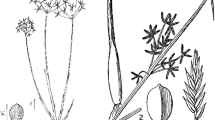Abstract
Wastewaters from four different sources were treated using locally developed plant, while treatment components included Azolla pinnata fern and palm kernel shell charcoal. The four wastewater sources were: domestic, municipal, aquaculture and industrial. Twenty-five parameters considered included: temperature, turbidity, electrical conductivity, pH, total suspended solid, total dissolved solids, total solid, acidity, total hardness, total nitrogen, total phosphorus, ammonical nitrogen, dissolved oxygen, biological oxygen demand and chemical oxygen demand. Metals analyzed also included; sodium, potassium, calcium, magnesium, zinc, iron, lead, copper, cadmium and manganese. From the results, considerable reduction in pollutant parameters were obtained in the four wastewaters after treatment. Complete (100%) removal efficiencies were obtained in cadmium and manganese in all the wastewaters except for aquaculture wastewater, while complete removal was obtained in lead and copper in aquaculture wastewater only. Similarly, turbidity, phosphorus and nitrogen recorded complete removal in all the wastewaters except for 75.7% removal of phosphorus in municipal wastewater. Other parameters reduced appreciably with statistically significant results at P < 0.05. This indicated high efficiency of the treatment plant, A. pinnata, in pollutants and metals’ removal, thereby making the treated four wastewaters good enough to be recycled for irrigation purposes.
Similar content being viewed by others
References
Adejobi OS, Olorunmibe RO (2012) Challenges of waste management and climate change in Nigeria: Lagos state metropolis experience. Afr J Sci Res 7(1):163–167
Akinbile CO (2016) Polishing of landfill leachate in control and treatment of landfill leachate for sanitary waste disposal. Advances in environmental engineering and green technologies (AEEGT) book series. In: Aziz HA, Amr SSA (eds) IGI Global, Hershey, pp 349–368. http://www.igi-global.com/book/control-treatment-landfill-leachate-sanitary/137054. Accessed 24 Jan 2017
Akinbile CO, Yusoff MS (2012) Assessing water hyacinth (Eichhornia crassipes) and lettuce (Pistia stratiotes) effectiveness in aquaculture wastewater treatment. Int J Phytoremediat 14(3):201–211 (Taylor and Francis, UK)
Akinbile CO, Yusoff MS, Talib SHA, Hasan ZA, Haque AMM, Samsudin UB (2013) Qualitative analysis and classification of surface water in Bukit Merah Reservoir in Malaysia. J Water Sci Technol 13(4):1138–1145. https://doi.org/10.2166/ws.2013.104 (IWA Publishers, UK)
Akinbile CO, Semowo OR, Babalola BE, Hasfalina CH (2016a) Assessment of the influence of continuous and intermittent irrigation on greenhouse gas emissions from paddy rice. J Teknol 78(1–2):1–7. (Malaysia)
Akinbile CO, Ogunrinde AT, Hasfalina CM, Abdul Aziz CH (2016b) Phytoremediation of domestic wastewaters in free water surface constructed wetlands using Azolla pinnnata. Int J Phytoremediat 18(1):54–61 (Taylor and Francis, UK)
Amuda T, Ismail N, Alkarkhi AFM, Teng TT (2011) Optimization of coagulation process for landfill leachate pre-treatment using response surface methodology (RSM). J Sustain Dev 2(10):34–37
APHA (2005) Standard methods for the examination of water and waste water, 21st edn. American Public Health Association, Washington, DC
Axtell NR, Sternberg SPK, Claussen K (2003) Lead and nickel removal using Microspora and Lemna minor. Biores Technol 89:41–48
Buttice LA (2010) Removal of sediment and bacteria from water using green chemistry. Environ Sci Technol 44(9):3514–3519. https://doi.org/10.1021/es9030744 (Department of Chemical and Biomedical Engineering, University of South Florida, Tampa)
Charkhabi AH, Sakizadeh M (2006) Assessment of spatial variation of water quality parameters in the most polluted branch of the Anzali wetland, Northern Iran. Pol J Environ Stud 15(3):395–403
Choo TP, Lee CK, Low KS, Hishamuddin O (2006) Accumulation of chromium (VI) from aqueous solutions using water lilies (Nymphaea spontanea). Chemosphere 62:961–967
Corcoran E, Nellemann C, Baker E, Bos R, Osborn D, Savelli H (eds) (2010) Sick water? The central role of wastewater management in sustainable development. A rapid response assessment. UN-Habitat/UNEP/GRID, The Hague
FAO (Food and Agriculture Organization of the United Nations) (2007) Irrigation in Africa in figures: AQUASTAT survey—2005. FAO water report no. 29. FAO, Rome. ftp://ftp.fao.org/agl/aglw/docs/wr29_eng.pdf
Gupta GK, Shukle R (2006) Physiochemical and bacteriological quality in various sources of drinking water from Auriya district (UP) industrial area. Pollut Res 23(4):205–209
Hamed HK (2012) Qualitative assessment and classification of Aji Chai river using water quality index (WQI). World J Fish Mar Sci 4(1):50–53
Man HC, Akinbile CO, Jun CX (2015) Coconut husks (CH) adsorbent in the removal of methylene blue (MB) dye from wastewaters in Malaysia. Bioresources 10(2):2859–2872. https://doi.org/10.15376/biores.10.2.2859-2872
NSDWQ (2007) Nigerian standard for drinking water quality. Nigerian industrial standard NIS 554. Standard Organization of Nigeria, Lagos
Ogedengbe K, Akinbile CO (2004) Impact of industrial pollutants on quality of ground and surface waters at Oluyole industrial estate, Ibadan, Nigeria. Niger J Technol Dev 4:139–144
Ogedengbe O, Oriaje AT, Tella A (1985) Carbonization and activation of palm kernel shells for household water filters. Water Int 10:132–138
Okoh AI (2009) Wastewater treatment plants as a source of microbial pathogens in the receiving watershed. Afr J Biotechnol 6(25):2932–2944
UNESCO (2004) United Nations world water development report, part 3, ‘water for people, water for life’. A look at the world’s freshwater resources. http://www.unesco.org. Accessed 10 Jan 2015
WHO (2007) Water for pharmaceutical use in quality assurance of pharmaceuticals. A compendium of guidelines and related materials, 2nd edn. World Health Organization, Geneva, pp 170–187
WHO (World Health Organization)/UNICEF (United Nations Children’s Fund) (2010) Progress on sanitation and drinking-water: 2010 update. Joint Monitoring Programme for Water Supply and Sanitation, Geneva. http://www.who.org
Acknowledgements
The authors are grateful to the contributions of the staff of the University Central Laboratory for their assistance in the water quality analyses, and the efforts of the anonymous reviewers are gratefully acknowledged.
Author information
Authors and Affiliations
Corresponding author
Rights and permissions
About this article
Cite this article
Akinbile, C.O., Ikuomola, B.T., Olanrewaju, O.O. et al. Assessing the efficacy of Azolla pinnata in four different wastewater treatment for agricultural re-use: a case history. Sustain. Water Resour. Manag. 5, 1009–1015 (2019). https://doi.org/10.1007/s40899-018-0273-1
Received:
Accepted:
Published:
Issue Date:
DOI: https://doi.org/10.1007/s40899-018-0273-1




